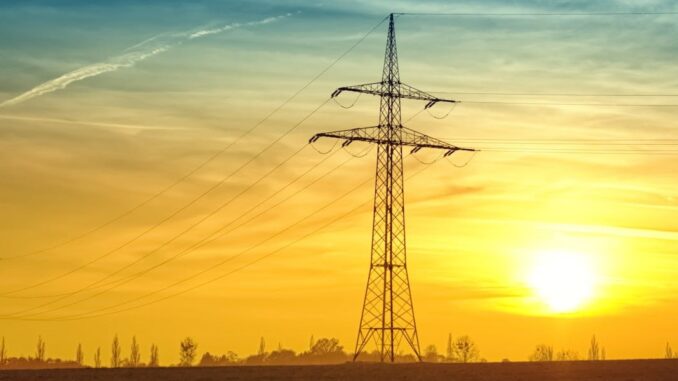
In an article in the August issue of National Review, Mario Loyola warns of a looming energy crisis in the United States that would be largely self-inflicted. Stated simply, it’s a case of increasing demand and decreasing supply of reliable power.
First, the increasing demand. For many years, it looked like the future of electric power in the US was one of slow growth, mainly because the increased efficiency of traditional power-hungry industries such as manufacturing was combining with the overall transition to a service economy to create a situation in which we were doing more every year with only slight increases in power consumption.
That is no longer the case. And one of the big reasons is a new type of industry: server farms. The explosion in demand for computing power for novel applications such as artificial intelligence and cryptocurrency mining is now one of the biggest growth sectors for electric power. Loyola says electricity demand will grow by at least 15 percent by 2032, only eight years from now.
Perverse subsidies
How are we going to meet that demand? Right now, nobody knows. From an economic point of view, building new power plants is a long-term process. Investors want to be sure that the billions they put into new plants are going to pay off profitably during the lifetime of the equipment. That requires, among other things, a stable regulatory environment. But electric power is one of the most heavily regulated and perversely subsidised industries around.
The perverse subsidies right now are all in favour of renewable energy, such as solar and wind power. The reason for this is not economic as much as it is ideological. A substantial and powerful political sector would like nothing better than to see all fossil-fuel facilities tossed into the ocean (except for the pollution that would cause) or otherwise banished from the planet. We won’t go into the well-known reasons for the hatred of fossil fuels here, but the fact of the matter is that if all fossil-fuel facilities vanished tomorrow, most of us in the US would die in a matter of weeks.
The result of all these incentives is that the “interconnection queue”, which is kind of a waiting list that the Federal Energy Regulatory Commission keeps for prospective generating facilities, is currently 95 percent solar power, and hardly anyone seems to be planning new natural gas or nuclear plants.
No matter what politicians say, you get no power from solar or wind on a windless night, of which there are many during the year. And it is still largely true that we can’t store large amounts of energy in batteries, although about 4 GW of battery capacity is now on the grid. For comparison, the total generating capacity available in the US in 2022 was over 1,600 GW. That’s 0.25 percent of our total capacity. To get it up to even 10 percent would require 40 times as much storage as we have now, and we won’t get there for years, even if we could afford it.
For the foreseeable future (which feels like it’s shorter all the time), a reliable, dispatchable power grid will need to have at least a majority of its power coming from sources you can turn on and off whenever you want. Right now, that means nuclear, gas, and (pardon the expression) coal-fired plants. But for various mainly ideological reasons, coal-fired plants are getting as scarce as DVD rental stores, and nuclear is under both a political cloud and subject to extremely encumbering regulations, as are most types of power infrastructure, even renewable-energy ones.
The way forward
In a separate article in the same issue, author Dominic Pino points out that the only US industry largely free of any kind of regulation is the tech sector, meaning software-websites-social-media stuff. Any activity that needs large numbers of people working for it, large amounts of stuff on land, or large amounts of imports runs into a forest of regulatory trees that requires years of bushwhacking to get through — except for tech. And what industry is doing famously well compared to all the others? Don’t ask.
Even tech needs power, though, and if we keep going the way we’re going, we will end up like Germany, which made the politically favoured but empirically stupid decision a few years ago to shutter all its perfectly good nuclear plants. So now Germany depends for its energy largely on natural gas plants running off Russian gas, which is like chickens buying chicken feed from the fox. Experts at the Harvard International Review attribute Germany’s lacklustre economic performance the last few years to its extremely high energy prices, which in turn result from slow growth even in the renewables sector and bureaucratic barnacles on the ship of state.
On the other hand, Texas, with its famously independent electrical grid, is going ahead with plans to add a lot of dispatchable power in the forms of natural gas and possibly even nuclear energy. Texas A&M (still fondly known as Aggies despite the fact that the agricultural school is dwarfed by high-tech engineering these days) is planning to build not one, but several small nuclear power plants right on their campus in West Bryan.
Governor Abbott likes to do news releases every time a generating firm announces plans to build new power plants, whether it’s natural gas, nuclear, or something else. Just one recent announcement from his office stated that 42 new gigawatts of power were being planned by one firm, which goes a long way toward getting us to the 150 GW or so that Loyola says Texas will need by 2030.
And while I chilled out along with everyone else during the February 2021 Texas cold-weather grid failure, which might not have been as bad if Texas’s grid wasn’t independent of the rest of the country, that same independence makes it easier to plan new capacity in Texas than anywhere else in the country, where the Environmental Protection Agency and other bureaucratic blockades slow the process.
So which shall it be? A stagnant, energy-starved, but green economy? Or energy enough to power all those electric cars that people allegedly want to drive, and the AI server farms, and maybe even some old-fashioned hands-on factories that we’ve almost forgotten how to build? The choice is pretty clear, although energy policy doesn’t rank very high on this year’s political agenda. But it’s something that affects the lives of everyone in the United States, which makes it inevitably political. And I only hope that the political process can handle it in a way that at least doesn’t do a lot of harm.
Take the Survey at https://survey.energynewsbeat.com/






